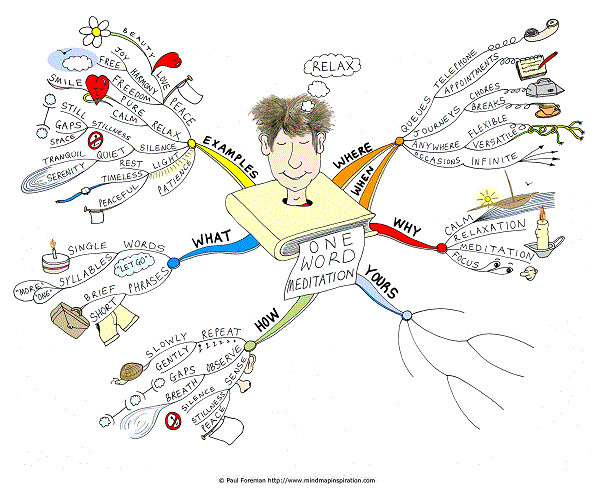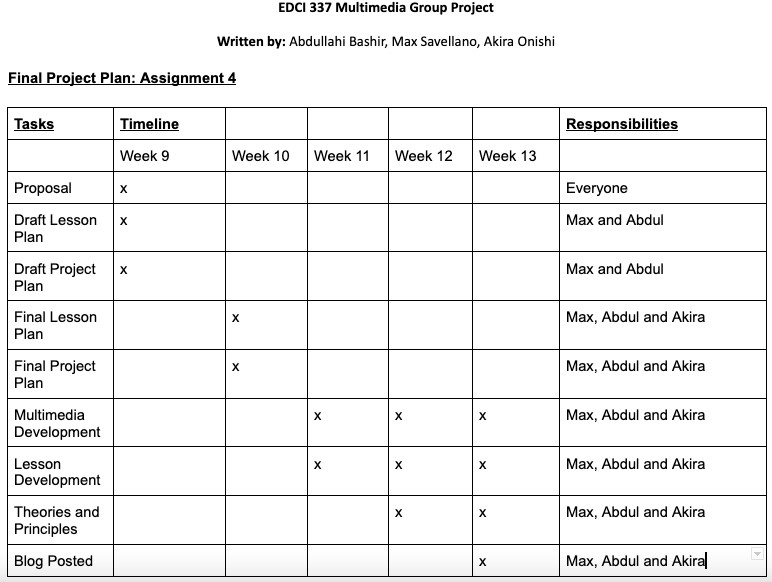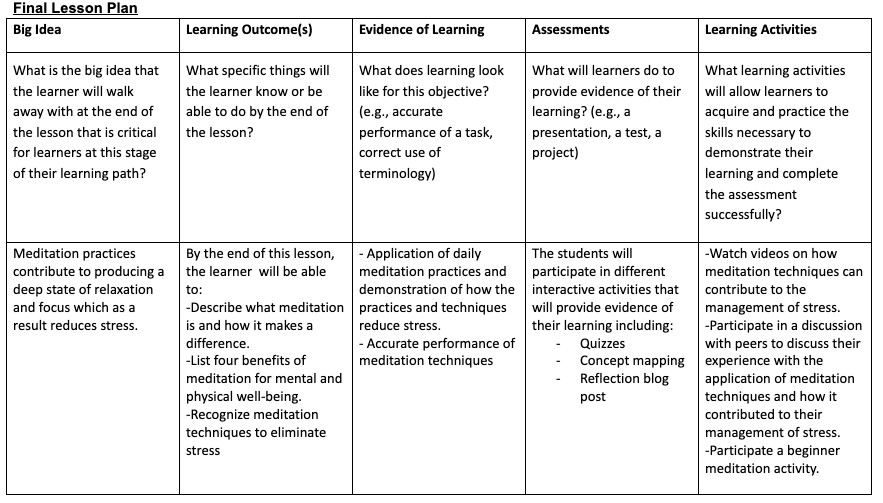Stress Management through the Use of Meditation
2022-12-04 / MS25 / 0 COMMENTS

EDCI 337: Multimedia Design Project
Maximo Savellano, Abdullahi Bashir, & Akira Onishi
Overview
The final weeks of school can be extremely stressful. Upcoming finals and final assignments can lead to elevated levels of stress and can ultimately hinder performance.
So this This week, we will be learning about Mediation and it’s benefits and how we can use it to manage stress and anxiety.
To help us understand the concept of Meditation – lets begin with an introductory video on what exactly Meditation is.
Let’s begin!
Lesson Objectives
By the end of this blog you will be able to:
- Describe what meditation is and how it makes a difference.
- List up to four benefits of meditation for mental and physical well-being.
- Recognize meditation techniques that reduce or eliminate stress.
Read/Watch
Watch: The Scientific Power of Meditation (2:59 minutes) – Let’s dive into the scientific perspective of meditation.
Read: Meditation for Stress – Read on what causes stress and how we can use meditation to mitigate stress.
Read: 28 Meditation Statistics: How Many People Meditate? – Read on some statistics of Meditation
Content – Let’s Learn!
Let’s now learn different meditation techniques, how meditation makes a difference and benefits of meditation!
Meditation: A simple, fast way to reduce stress
Since ancient times, meditation has been used to increase knowledge of the mystical and divine energies that govern existence. Nowadays, people commonly employ meditation to de-stress and ease tension (2022, March 30). For the body and mind, meditation is viewed as a type of supplementary therapy. Deep relaxation and mental calmness are the results of meditation. The person concentrates during meditation and gets rid of the constant stream of disorganized ideas that might be causing stress. As an outcome, both physical and emotional well-being is improved. There are several types of meditation. However, most meditation techniques have similar features, including (2022a, April 29):
- A quiet setting
- A comfortable position
- Focused attention
- An open attitude
- Relaxed breathing
Some of the meditation types include guided meditation, mantra meditation and mindfulness meditation (2022b, April 29). Meditation makes a significant difference because it promotes a state of balance, serenity, and tranquillity that is good for one’s mental, emotional, and physical health (2022, May 5).
Different Meditation Techniques
Meditation comes in many different forms and can be practiced through a variety Meditation comes in many different forms and can be practiced through various techniques. Meditation is especially effective as a classroom practice and helps strengthen self-regulation, boost health, and reduce negative feelings/anxiety (Kuranishi, 2018). When implementing meditation, it is essential to begin with, simple techniques to effectively train the mind to keep focus. Before choosing a meditation technique, it is important to learn how to meditate. The following is an effective guide provided by the Mindful organization on how to meditate:
1) Take a seat
Find a place to sit that feels calm and quiet to you.
2) Set a time limit
If you’re just beginning, it can help to choose a short time, such as five or 10 minutes.
3) Notice your body
You can sit in a chair with your feet on the floor, you can sit loosely cross-legged, you can kneel—all are fine. Just make sure you are stable and in a position you can stay in for a while.
4) Feel your breath
Follow the sensation of your breath as it goes in and as it goes out.
5) Notice when your mind has wandered
Inevitably, your attention will leave the breath and wander to other places. When you get around to noticing that your mind has wandered—in a few seconds, a minute, five minutes—simply return your attention to the breath.
6) Be kind to your wandering mind
Don’t judge yourself or obsess over the content of the thoughts you find yourself lost in. Just come back.
7) Close with kindness
When you’re ready, gently lift your gaze (if your eyes are closed, open them). Take a moment and notice any sounds in the environment. Notice how your body feels right now. Notice your thoughts and emotions.
Provided by (Mindful Communications & Such PBC, 2022)
After learning the basics of meditation, we can now observe the different techniques and how they can help reduce stress and anxiety. There are two main kinds of meditation techniques; guided and unguided meditation. In guided meditation, an instructor guides you through meditation and is usually recommended to beginners to get used to meditation. The other is unguided meditation which is the process of meditating alone. While these two are the basic types of meditation, there are specific types with different benefits and purposes. Here are five types of meditation techniques and their purposes.
Mindfulness Meditation
Mindfulness Meditation is the act of being aware of the present moment. This form of meditation can be done at any time and requires complete focus on what is being done in the present moment—for example, brushing your teeth, washing dishes, and running. Mindfulness meditation is effective for beginners as it takes their minds off external stresses and allows them to be present at the moment.
Body scan Meditation
Body Scan meditation focuses on consciously relaxing different parts of the body. This meditation helps relieve muscle tension built up from stress and anxiety. Being consciously aware of body parts can increase mind and body connection.
Walking Meditation
Walking meditation is the process of focusing on each step in order to be fully present. Focusing on the mechanics and motion of each step heightens situational awareness and increases the feeling of being present. This type of meditation is used by individuals who are jittery and find it difficult to stay still.
Loving Kindness Meditation
Loving Kindness meditation is a form of meditation that focuses on self-love and the cultivation of compassion for others. Loving Kindness Meditation helps with body image and empathy, this type of meditation starts with positive intention for oneself.
Transcendental Meditation
This type of meditation focuses on a phrase or mantra through repetition. Transcendental meditation utilizes the phrase/mantra as the object of awareness and allows individuals to focus and be aware of their surroundings. Choosing the mantra/phrase can also be beneficial, as positive mantras help with positive intention.
Benefits of meditation
1- Reduces stress:
Stress disrupts sleep, promotes anxiety and increases blood pressure. An eight-week study called “mindfulness meditation” proved that meditation reduced the inflammation response caused by stress (Thorpe, 2020).
2- Controls anxiety:
According to Dr. Thrope, eight weeks of mindfulness meditation helped reduce anxiety symptoms in people with generalized anxiety disorder, along with increased positive self-statements and improved stress reactivity and coping.
3- Increases attention span:
The Study shows that listening to a meditation tape improved accuracy and attention while completing a task. Similar studies have shown better performance on visual tasks than those without any meditation experiences (Thorpe, 2020).
4- Leads to kindness:
Meditation techniques, such as Loving Kindness Meditation, increase positive feelings. Another study of 50 university students showed that practising Loving Kindness Meditation three times a week improved positive emotions, interpersonal relationships and understanding of others after four weeks (Thorpe, 2020).
Activities
Actvity 1 – Shark Fin Exercise
Now that we have learned about different meditation types, let’s do a beginner meditation exercise so you can begin your meditation journey!

Activity 2 – Concept Map
Create a concept map outlining at least four aspects of your school-related stress and how you were able to handle it?

Quiz
How well do you know your Meditation Statistics?
hint: complete your Readings!about:blank
Reflection
- When you tried practicing meditation techniques provided, Did it make any difference?
- How did you handle school related stress before? have you ever tried practicing meditation to reduce stress? What was the result?
- Are there any other benefits experienced or noticed when used the meditation techniques provided?
- Do you think you will use the meditation practices provided whenever you face stress?
To Do This Week
- Complete the Read/Watch Section
- Complete the Let’s Learn Section
- Complete and participate in the learning activities
- Complete the Meditation Statistics Quiz
- Complete the reflection questions
Theories and Principles
Merrils Principles of Instruction
We utilized the three following principles from Merril’s Principles of Instruction to teach learners about the topic of Meditation:
Demonstration
It is stated in this phase that educators must show vs tell. To effectively introduce the concept of meditation, we utilized the demonstration principle in our content by introducing learners to different videos and demonstrations of meditation. During this phase learners observe how meditation works and how it can be applied in real life.
Application
In the application process, Merrill believed that relying on memory was not sufficient enough for applying learning. Merrill believes that learners should actually do what they learned to understand the content in a real-life aspect. Although we created a multiple choice exam in our lesson, we also implemented interactive activities that allow the learner to perform meditation techniques and recognize the process of meditation.
Integration
Lastly, the integration principle is where learners must transfer their knowledge into practice. We utilized this principle by allowing the learners to reflect on their experiences and gave them opportunities to teach what they learned and most importantly practice what they learned. Our focus on integration was to help the learner create a new habit which will ultimately help them reduce stress and anxiety.
Mayer’s Theory of Multimedia Learning
We used some of Mayer’s principles, such as the Cognitive Load Theory, by structuring our lecture with distinct, bold headers and removing everything that would distract the student. Additionally, the multimedia material that calls for interaction provides explicit instructions for how to use it. The coherence principle, by only adding relevant materials and activities to our topic and avoiding irrelevant information and destructing materials. The signalling principle, by ensuring the key information is displayed clearly with headers and highlighted to make it simple to identify and access.
Other Design Principles
Universal Design for Learning
We have employed some of the UDL theory in creating the lessons. For instance, we have provided multiple means of engagement to increase the effectiveness of learning, we have selected different methods, materials and media to address learners variability. In addition, we set a learning goal to guide students as they work through the course, and to assess their learning progress.
Final Lesson Plan and Final Project Plan


References
Kuranishi. (2018, October 28). Pause, Refocus, Assess: Meditation in the Classroom. edutopia.org. https://www.edutopia.org/blog/pause-refocus-assess-meditation-classroom-adam-kuranishi
Learning Science Made Easy: Merrill’s Principles of Instruction | WBT Systems. (n.d.). https://www.wbtsystems.com/learning-hub/blogs/merrills-principles-of-instruction
Meditation – Mayo Clinic. (2022, May 5). https://www.mayoclinic.org/tests-procedures/meditation/about/pac-20385120
Meditation: A simple, fast way to reduce stress. (2022a, April 29). Mayo Clinic. https://www.mayoclinic.org/tests-procedures/meditation/in-depth/meditation/art-20045858
Meditation: A simple, fast way to reduce stress. (2022b, April 29). Mayo Clinic. https://www.mayoclinic.org/tests-procedures/meditation/in-depth/meditation/art-20045858
Mindful Communications & Such PBC. (2022, February 5). Mindful – healthy mind, healthy life. Mindful. https://www.mindful.org/
Smith, L. (2022, November 11). 28 Meditation Statistics: How Many People Meditate? The Good Body. https://www.thegoodbody.com/meditation-statistics/
Thorpe, M., MD PhD. (2020, October 27). 12 Science-Based Benefits of Meditation. Healthline. https://www.healthline.com/nutrition/12-benefits-of-meditation
Welch, A., & Laube, J., MD. (2022, March 30). Meditation: A Guide on How to Meditate for Stress Reduction and More. EverydayHealth.com. https://www.everydayhealth.com/meditation/
Leave a Reply